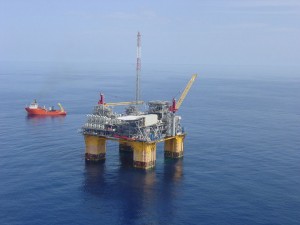
he Gulf of Mexico, long a dominant producer of fossil fuels, could one day become a clean energy hub.
State and federal authorities and private developers are exploring the potential of offshore wind within the Gulf. The region has several promising attributes, including a ready maritime workforce, diverse port network and offshore construction know-how garnered through decades of offshore drilling.
In June, the federal Bureau of Ocean Energy Management (BOEM) published a formal Request for Interest to assess developers’ willingness to install wind farms (or other renewable power infrastructure) off the coasts of Louisiana, Texas, Mississippi and Alabama. A few days later, BOEM convened a task force of regional government officials.
The Gulf has long been dominated economically and politically by oil and gas interests that compete with renewable energy. But offshore wind backers think the sheer economic opportunity from what could be a $70 billion business by 2030 will overcome any local hesitance.
“[T]his is a very real economic opportunity and I would say that it’s the U.S.’s opportunity to miss right now,” Brandon Burke, vice president of policy and regulatory engagement at the Network for Offshore Wind, told Professional Mariner.
The more focus, engagement, and investment Gulf Coast states can provide to support to their in-state businesses and promote their entry into the offshore wind industry, the better prepared they will be, he said. “I think this is really a once-in-a-generation economic opportunity for Americans around the country.”
The nascent offshore wind industry has, to date, focused much of its attention on the East Coast. That region is home to the country’s two existing offshore wind farms, off Rhode Island and Virginia, and more are in the pipeline. BOEM has already approved leases totaling 1.7 million acres between Cape Cod and Cape Hatteras.
The agency first accessed the feasibility and economic potential of Gulf of Mexico offshore wind farms starting with a set of studies commissioned in 2017 and published in mid-2020. The first found the region could support enough wind farms to produce 508 gigawatts of electricity. But the turbines must be adapted for installation in softer sediments and bolstered to withstand seasonal hurricanes. (Wind farms have been built to withstand extreme weather conditions across the world.)
The second study found just one offshore wind project could support about 4,470 jobs and raise $445 million in gross domestic product (GDP) during construction and 150 jobs and $14 million in economic activity annually from its ongoing operation, service and maintenance. Study authors looked for potential offshore wind hub ports in the Gulf and decided Pensacola, Florida, and the Texas cities of Port Arthur and Port Isabel were the most promising.
Louisiana Gov. John Bel Edwards invited BOEM to start a task force in the region last year, and in May he announced plans to shift the state to become carbon-neutral by 2050.
Policymakers in Texas have thus far shown less interest in offshore wind. But that, too, could change over time. “Texas doesn’t have much in energy clean goals,” said Luke Metzger, executive director of the group Environment Texas. “I think there is less momentum in Texas but if we have BOEM instigating and if some developers emerge, we could be up to speed in 10 to 15 years. I’m hopeful.”
Anthony Bodin, director of business development at Greater New Orleans, Inc., an economic development corporation, said this type of conflict does not exist among business leaders across industries.
“[W]hat we found was a unanimous support for (offshore wind) and for us in this region becoming a leader,” Bodin said. “This is certainly not an end to oil and natural gas. We are in a transitional phase and oil and natural gas is going to remain the main economic driver for our region, but there is ample to space to add a new sector like offshore wind.”
Additionally, he said, the region’s history of offshore drilling makes it more capable of developing offshore wind farms. “The oil and natural gas sector, they have the skill and the expertise that would be transferrable to offshore wind, so there is a direct jobs effect to manufacturing and an indirect jobs effect all across the supply chain.”
Burke, from the Network for Offshore Wind, said the existing offshore infrastructure in the Gulf could have a new life supporting offshore wind projects.
“[T]here is some potential to repurpose some of these platforms as offshore substations and that could minimize environmental impact,” he said. “Provided that it is structurally appropriate, and all the engineering works out, you can use this existing infrastructure offshore and to avoid having to disturb the seabed in another location.”
